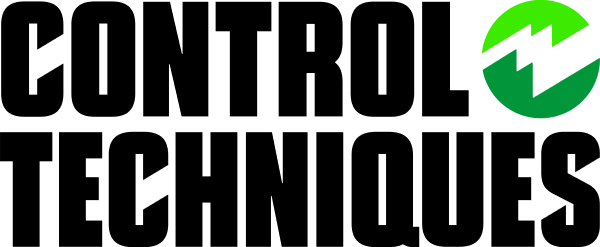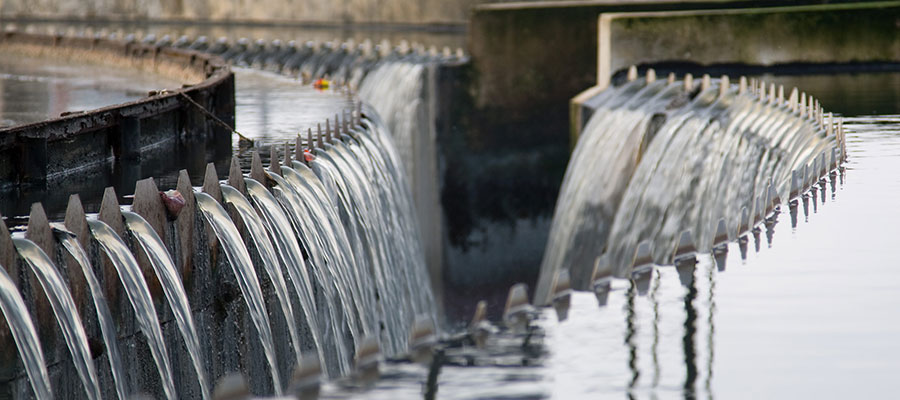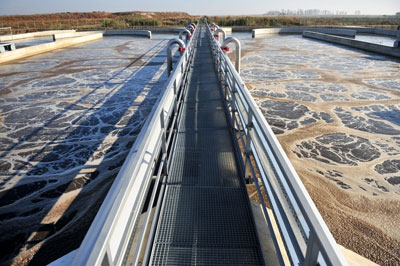With vastly greater volumes of wastewater requiring treatment in the years to come, it is increasingly to drive technology that operators turn for improved performance and greater cost efficiencies.
The United Nations (UN) estimates that globally just under 4000 trillion litres of wastewater is produced annually. To try to put this number into a more understandable context, each day UK sewers collect nearly 3000 billion litres of wastewater from homes, offices and industrial premises. The figure also includes run-off from roads and other impermeable surfaces. Agricultural run-off is almost never collected or treated, so data for this is sketchy to say the least.
Wastewater treatment is a major priority
Wastewater is defined as water which is of no further value to the purpose for which it was used, and its treatment has become a major priority, both on grounds of health and the environment. Untreated wastewater is often seen as a missed opportunity, but it can also be a killer.
While the precise function of treatment plants may differ depending on the source of the wastewater, e.g. industrial and sewage, the basic principles of decontamination are the same: namely mechanical, biological and chemical.
Richer countries treat a far higher proportion of their wastewater compared to poorer countries; for example, 70% of industrial wastewater is treated in Europe and North America compared with only 8% in many ‘low income’ central African countries.
Whatever the motivation – and much is regulatory – wastewater treatment is a vast and expanding concern, and operators are under pressure to improve cost-efficiencies and performance at a time environmental statute requires greater volumes to be treated.
Drives head-on with the challenge
Drives are pivotal in meeting the challenge, not just in ‘high-income’ countries where wastewater treatment is the norm, but in parts of the world where it is a lifesaver. Modern technology is the answer to most of the problems, but many operators recoil at the high cost of replacing existing machinery. The key is to introduce technology that can integrate, at least in part, with that already in place: with pumps and blowers much at the fore of the treatment process, variable speed drives (VSDs) can play an important role at every stage.
A case study of a treatment plant in South Carolina handling 50m litres of water per day, showed the benefits of replacing a constant speed motor with an AC VFD, yet keeping the old pumping sequence and control system. It involved the straightforward coupling of a framed motor (447T/460 volt) to the pump shaft – no harmonic filter was required due to a 3% line reactor intrinsic to the drive to protect against power surges.
Under the new arrangement, no energy was lost to slippage – and reducing the speed of the motor to 80% saw a near 50% reduction in energy usage. Other benefits included reduced vibration and downtime.
Pump blockage – referred to as ‘ragging’ (the fouling of pump impellers) – is also a problem in wastewater treatment and can be costly to clear. VFDs are now available with a ‘de-ragging’ function, a feature that changes pump speed and in some cases can even make the pump operate backwards.
How do drives tackle pump blockages?
An example of VSDs overcoming pump blockages is at Northumbrian Water’s Seaton Sluice treatment plant near Whitley Bay. A framework contractor to the company, Byzak Limited, worked with Control Techniques – part of the Nidec Group – to programme VSDs to automatically reduce the problem of ‘ragging’ (the fouling of pump impellers) and eliminate the need for human intervention.
Regulating flow in response to early detection of the problem was identified as fundamental. Unidrive AC drives were chosen for two main reasons: the drives measure true load torque in real time and have a powerful internal PLC, which has a reaction time measured in microseconds.
When the PLC recognises a change in torque indicative of ‘ragging’ (it is sensitive to 1-2% changes), procedures to clear the impeller are initiated. If the problem persists, an alarm is triggered so that the drive can be accessed using tailored CT software to assess and perform manual operations. In the first six months of monitoring, there have been no further blockages.
Blowers, like pumps, play an essential role in a wastewater treatment plant, with aeration blowers being the largest single consumer of energy. Bacteria is a necessary component of wastewater treatment, and the rate at which it grows is determined by air flow. Too little air overly slows the process, and vice versa. Using a correctly programmed VFD to control the speed of air flow at the right time optimises bacteria growth rate and provides major savings.
According to Shady Yehia of the Control Blog, in the same way as pumping water, correctly programmed software can provide energy savings of almost 50% when air flow rate is reduced by 20%. Other benefits of VFD aeration include better process control and reduced labour.
According to the International Water Association, wastewater treatment and its reuse needs to be embedded within a broader planning framework that positions water cycle management as a key connector and enabler. It believes the significant benefits – environmental, economic and social – to be derived from such an approach can only be realised after much increased government and private sector investment.
Wastewater management priority for a healthier planet
Water is a finite resource. If the World is to be a healthier and more environmentally responsible place, the management of water reserves will rank as a priority above most. It is not just the behaviour of the present population and the generations to follow that will determine the issue, but how engineering know-how can be applied to help with the task. That enormously more wastewater will need to be treated in future years is a certainty: and it is an equal certainty that technology will be key to making it possible.
Browse all sectors blog posts


